During World War II, roughly 280,000 men and women from Louisiana served in the Armed Forces. There were over 30 military installations in the state, in addition to more than 40 prisoner of war camps. Louisiana industry supplied the Allied war machine with vital materials such as oil, synthetic rubber, and ships of all sizes. Civilians collected scraps, grew Victory gardens, and bought war bonds to build aircraft. Louisianans were all in it together, and this series highlights when the Pelican State went to war.
The formation of Douglas A-20 Havoc bombers suddenly came into view. They began to close in, the air coming alive with the roar of the engines as the bomb bay doors opened. The lead aircraft guided the formation over the target. The cry of “Bombs Away!” within the lead bomber was lost in the excitement as the following aircraft released their payloads. The aircraft banked, turning for the trip home as their bombs fell, landing on their targets just outside of Hammond, Louisiana.
Low-level runs by bombers had become a common occurrence around the southern Louisiana town of Hammond by the fall of 1943. Located northwest of Lake Pontchartrain, the small community had had an interest in aviation for decades by the time the United States entered the war in 1941. A burgeoning new commercial airline industry increased the number of aircraft flying over the city, sometimes making emergency landings in fields or on roadways near Hammond. A rotating beacon was installed in Hammond as part of the markers used to light the popular air route between New Orleans and Jackson, Mississippi. The prospect of airmail service led Hammond civic and business leaders to build an airport which opened in May 1932, despite the financial constraints of the Great Depression. This early airport laid the groundwork for Hammond to become part of the US Army Air Forces’ (USAAF) training program a decade later.
Hammond’s role in airmail service was short-lived when the route was changed to go directly north over Lake Pontchartrain from New Orleans, and just two years after opening, the Hammond airport was abandoned. As the United States moved closer to war and the clashing of air forces in Europe made headlines, the president of Southeastern Louisiana College in Hammond quickly realized the need to join in the effort to provide pilot training. In the fall of 1940, the Civil Pilot Training Program (CPTP) began at Southeastern, using the abandoned Hammond airfield. One of the first 10 students selected was Helen Rickets, who went on to become a WASP (Women Airforce Service Pilots.) With the success of the student program came increasing interest in improving the airfield, which had also become necessary to meet heightened standards set by the Civil Aeronautics Authority (CAA), which governed the CPTP.
The new airport was to be a parish airport with asphalt runways and field lighting over 640 acres. The project was approved, but work was slow until late 1941, when the government deemed the project necessary for national defense. Work began in earnest on Tangipahoa Parish Airport in early 1942, and in September of that year the USAAF took over final construction and increased the length of the paved runways. Barracks and support facilities sprang up as an agreement was reached to lease the airport to the government for the duration of the war. On March 24, 1943, the Tangipahoa Parish Airport was re-designated Hammond Army Air Field (HAAF) and made a sub-base of Harding Field in Baton Rouge.
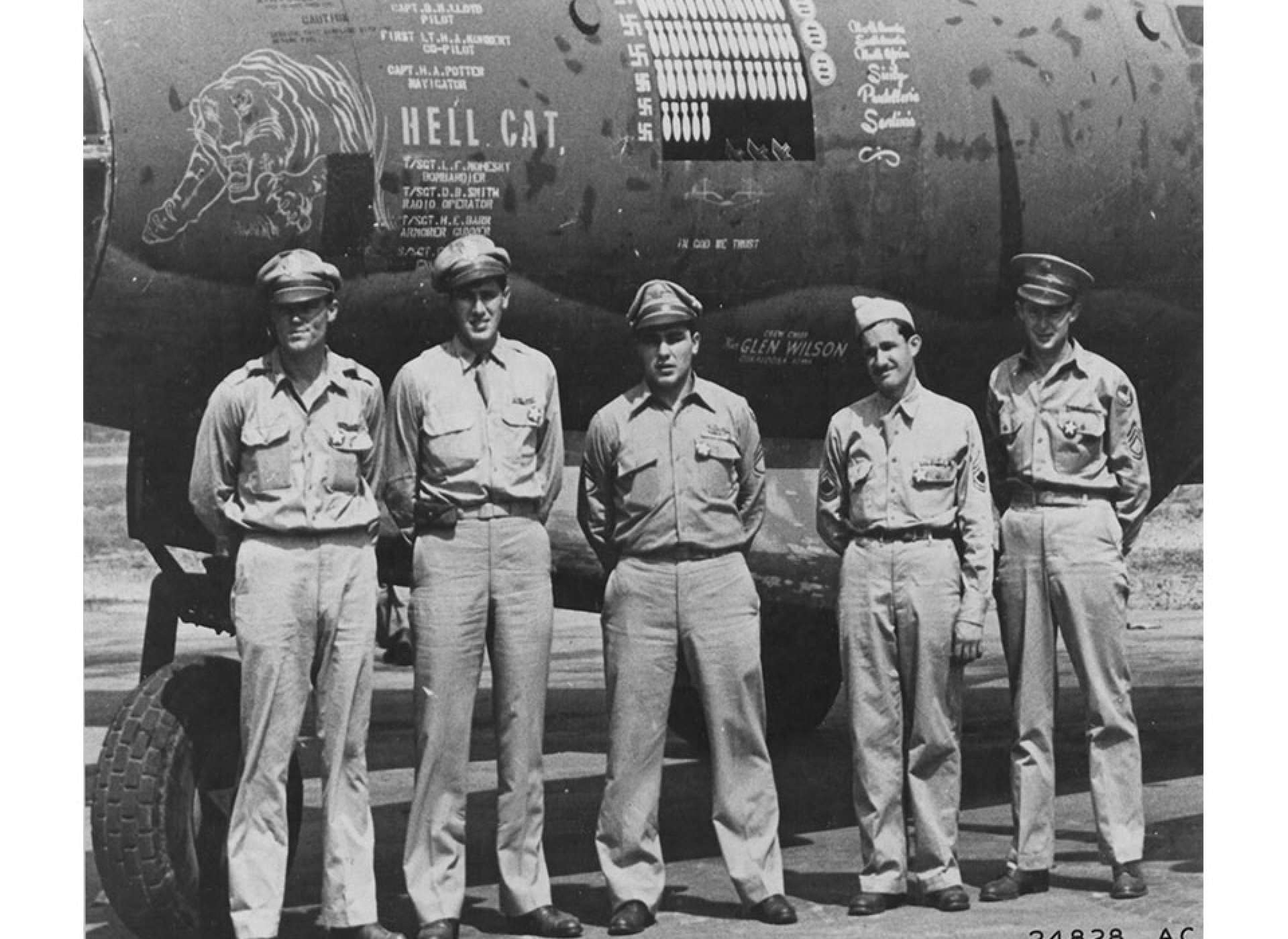
Despite being a sub-base of Harding Field in Baton Rouge, HAAF had superior runways, capable of handling bombers Harding Field could not. In October 1943, a B-26 Marauder named “Hell Cat” was on a war bond tour. Scheduled to stop in Baton Rouge, the aircraft could not land at Harding Field due to the poor condition of its runways. It landed instead at Hammond. US Air Force photo.
In addition to the airfield, the USAAF created a bombing and gunnery range, designated Hammond Bombing and Gunnery Range. Located northeast of Hammond, the range consisted of more than 15,200 acres of land (just over 23 square miles.) It was over this range that the first bombing runs were made by B-26 Marauders in August 1942, before the airfield was fully in use. The bombing range at Hammond provided a location for bomber crews to practice low and mid-level bombing runs at altitudes of approximately 12,000 feet and below. A special technique practiced at the range was skip bombing. Crews could practice releasing a bomb where it would hit the ground and skip along, hitting the target in the side. The range also included areas for strafing and ground target practice as well as setups for antiaircraft gun crews and ground troops to practice on a variety of weapons.
South of the airfield and range, over massive Lake Pontchartrain, was the Lake Pontchartrain Aerial Gunnery School. There was no bridge over the lake during the war, making the 629 square mile lake ideal for aerial gunnery practice. Fighter planes stationed at Harding and Hammond fields could practice hitting aerial targets at 5,000 feet above the lake. This resulted in the lake being closed to all fishing and recreational traffic for the duration of the war.
It is difficult to imagine the skies over south Louisiana being filled with formations of fighters and bombers, but the noise of the aircraft, rumble of explosions, and rhythmic firing of machine guns became part of everyday life for the residents surrounding Hammond and the north shore of the lake.
Public curiosity became such an issue that the local newspaper in Hammond had to print a warning that any individual caught photographing planes or the airfield would be treated as a spy!
The threats did not diminish the public’s support of the airfield, and over time many locals opened their homes to billet pilots during their training, and more than a few local women married pilots stationed at HAAF.
Starting in August 1943, A-20 Havocs were the first aircraft stationed at HAAF when the 417th Bombardment Group arrived. Over the next several months, different variants of the A-20 arrived at HAAF, including the P-70, a nighttime fighter version. In November, P-47 Thunderbolts arrived at the airfield. The massive fighter planes would be warmed up in the early morning, the roar of their engines audible across town. In the first months of the airfield’s operation, full units were brought in for training before deployment. In early 1944, the first major evolution of the airfield began when the emphasis shifted from Operational Training Units to Replacement Training Units. The permanent staff at the base was downsized as the transition was made.
-

Captain Randall M. Dorton, Jr. served as the Detachment Commander for the 417th Bombing Group. Dorton had already flown A-20s out of England and had received the Distinguished Flying Cross for a heroic flight over Europe. He was with the 417th at Hammond before they shipped out to New Guinea. Dorton was killed in a plane crash there in 1944. US Air Force photo.
-

A-20 Havocs of the 9th Air Force drop bombs over Pointe du Hoc, Normandy, France, in May 1944. A-20 crews who had trained at HAAF bombed German forces on D-Day, June 6, 1944. Image courtesy of the National Museum of the US Air Force.
In May 1944, B-17s from nearby Gulfport Army Air Field were ordered to use the Hammond Bombing Range to practice high-level bombing runs. Unlike the A-20s who flew in at low altitudes and only ever dropped 100-pound practice bombs, the massive B-17s would make practice runs at high altitudes of 25,000 feet and occasionally drop window-rattling 2,000-pound bombs. Flying in from Gulfport, Mississippi, the bombers practiced landing and taking off at the field, returning to their base in Gulfport.
Excitement grew in Hammond in September 1944 as sleek P-51 Mustangs began to arrive. A big contrast to the bulky P-47, locals who could make it out to the airfield would gather to watch them fly. The Mustangs had come from Key Field in Meridian, Mississippi, and were the first to participate in the new Hammond Gunnery School at HAAF. They used the bombing range to practice strafing and ground target training and the Pontchartrain Range to practice aerial gunnery. HAAF remained in use as the Hammond Gunnery School for the duration of the war, providing gunnery training to P-51 pilots. Occasionally units from other airfields would use Hammond for training, arriving and conducting their own courses independent of the Gunnery School. Although known for its relaxed atmosphere, the gunnery school at Hammond resulted in training scores so high inspectors were sent to ensure the numbers were accurate. From October 1, 1944 to January 31, 1945, the air-to-ground scores improved from a 25 percent hit rate to 50 percent, and air-to-air improved from nine percent to over 37.
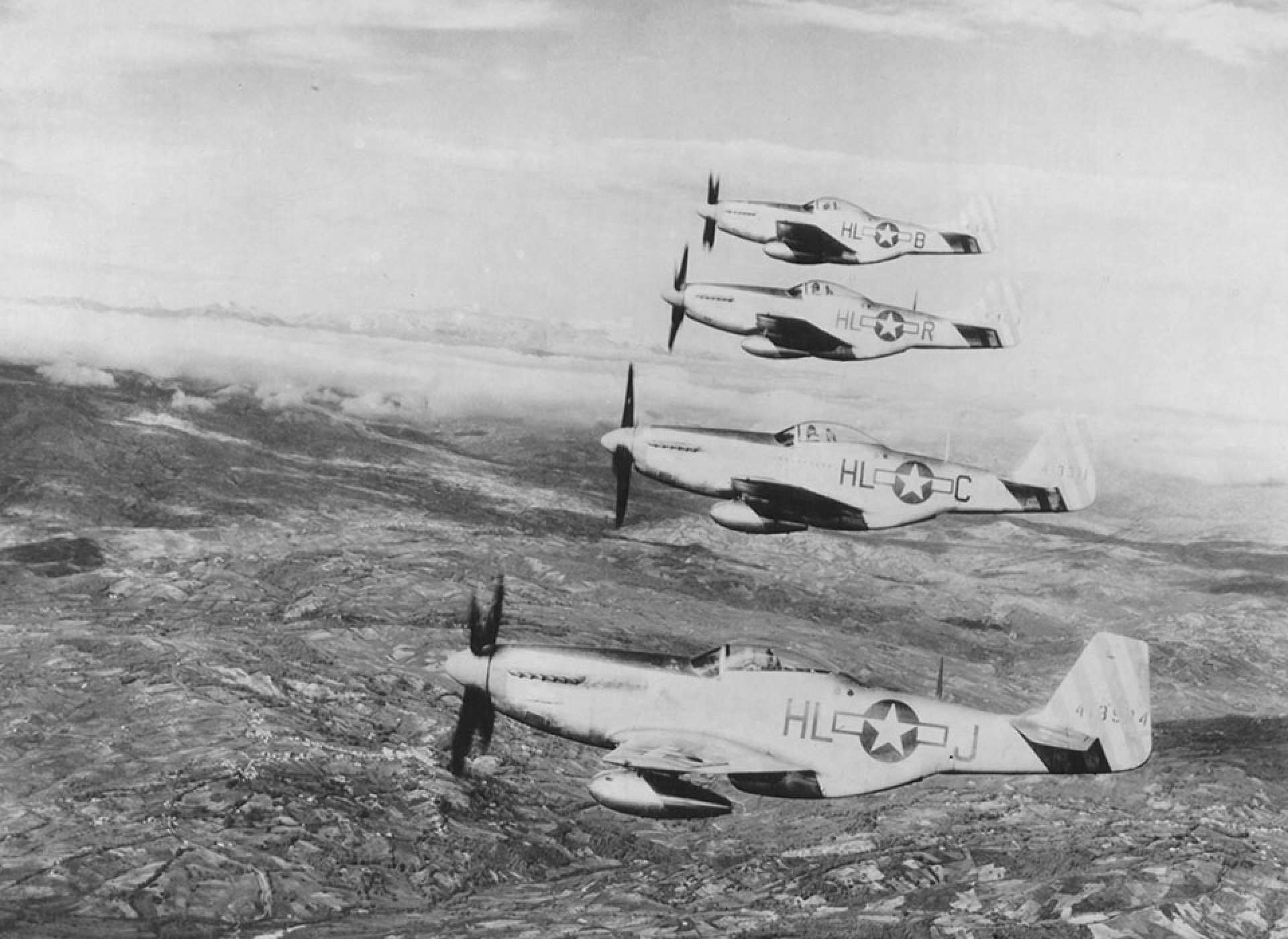
P-51Ds Mustangs of the 308th Fighter Squadron, 31st Fighter Group, 15th US Army Air Force in formation over Italy. P-51s were capable of ground and aerial attacks, making them a versatile fighter. Schools like the Hammond Gunnery School ensured pilots were well-trained to make the most out of these feared fighters. US Air Force photo.
With the end of the war on September 2, 1945, training did not stop. P-51s continued to fly through the skies around Hammond and out over the lake, taking aim at aerial targets. The residents of the area had been willing to sacrifice use of the lake for wartime needs, but with the surrender of the Japanese, their patience began to run out. Fishermen wanted back on the rich fishing waters of the lake and commercial airlines, prohibited from flying over the lake during the war, wanted to reopen direct routes again. By September 15, operations at HAAF ceased. Most of the personnel were gone within a month, with just a fire department left on site to maintain security.
The runways were leased to the City of Hammond, and Southeastern University obtained ownership of the buildings and land north and west of the airfield in 1946. In 1947, an agreement was worked out between all owners of the parts and parcels of the airfield to allow the City of Hammond to lease all of the property within the airport in order to operate it as a public airport, today known simply as Hammond Airport. Those flying in and out of the airport today have little to tell him of the airport’s past. The many pilots trained at Hammond were assigned to all theaters of the war, and many became decorated fliers, in no small part due to their time in the air over south Louisiana.
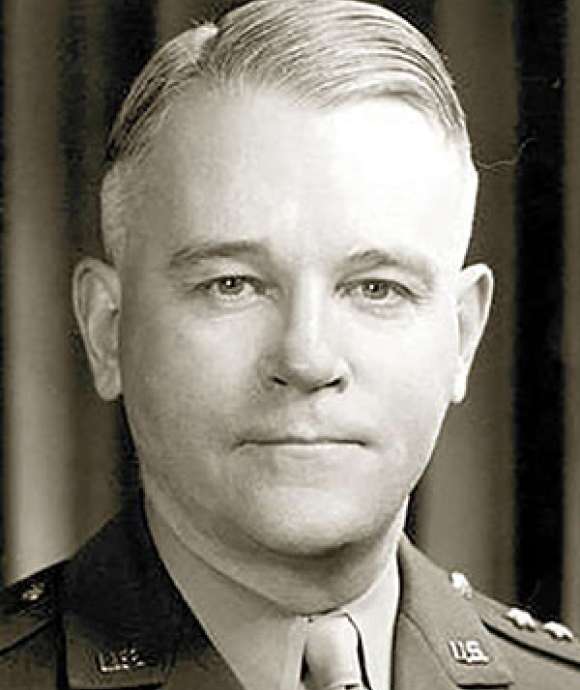
Louisiana Spotlight: "Lightning" Joe Collins
New Orleans born Major General Joe Collins led the US Army's VII Corps in Europe, battling German forces from Normandy to the Elbe River.
Kali Martin
Kali Martin is a former Research Historian of The National WWII Museum's Jenny Craig Institute for the Study of War and Democracy.
Cite this article:
MLA Citation:
APA Citation:
Chicago Style Citation:
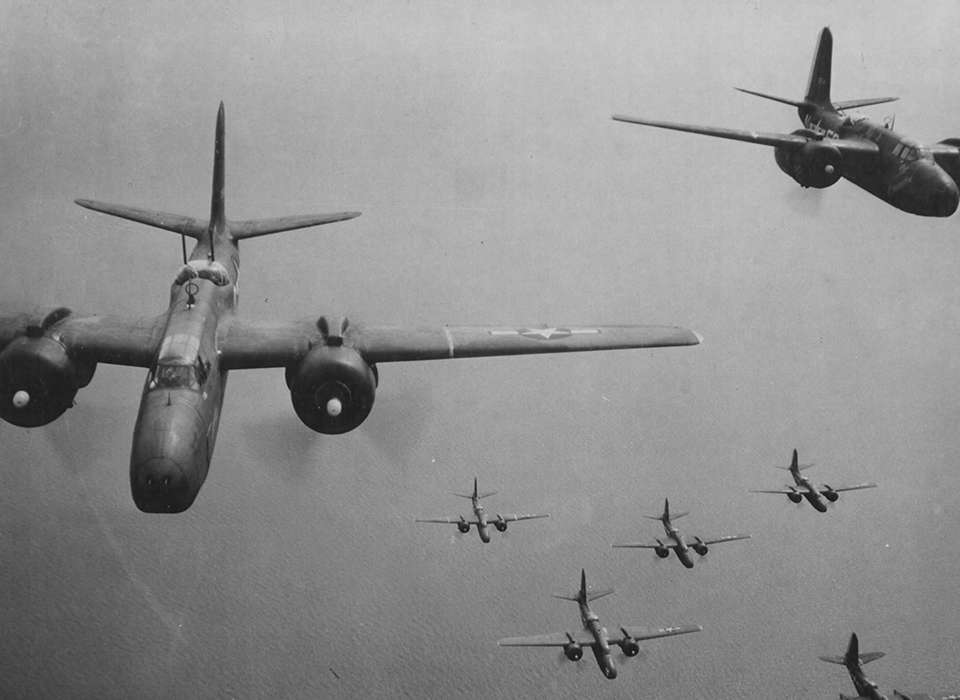
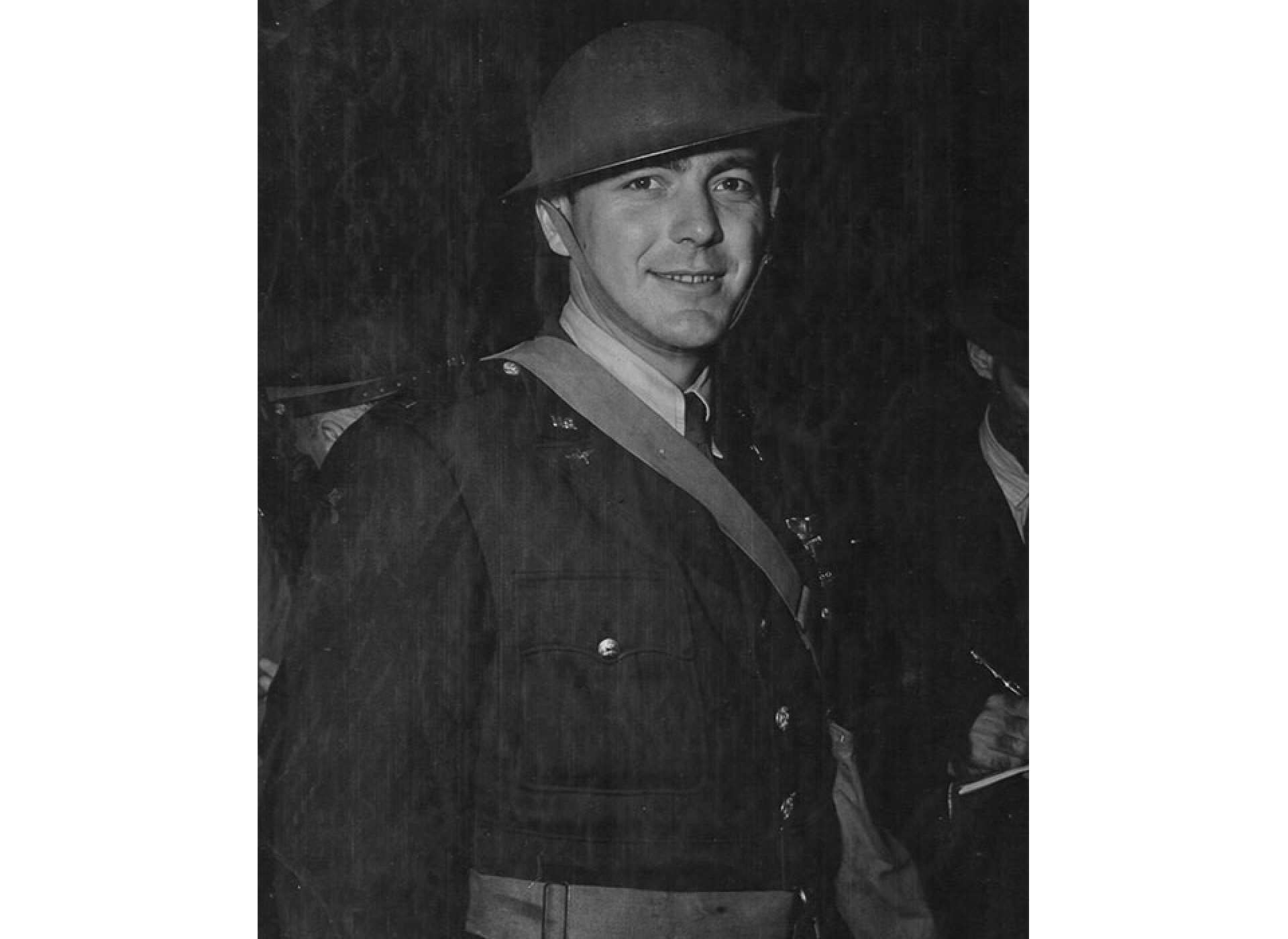





![Max Fuchs, New York City cantor, sings as Rabbi Sydney [sic] Lefkowitz, Richmond, VA, conducts the first Jewish services from Germany.](/sites/default/files/styles/max_650x650/public/2025-10/image1.jpg)


